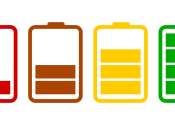Battery breakthrough gives boost to electric flight and long-range electric cars
In the pursuit of a rechargeable battery that can power electric vehicles (EVs) for hundreds of miles on a single charge, scientists have endeavored to replace the graphite anodes currently used in EV batteries with lithium ...
Jul 20, 2020
0
3270









